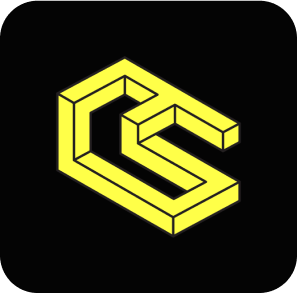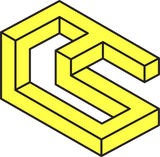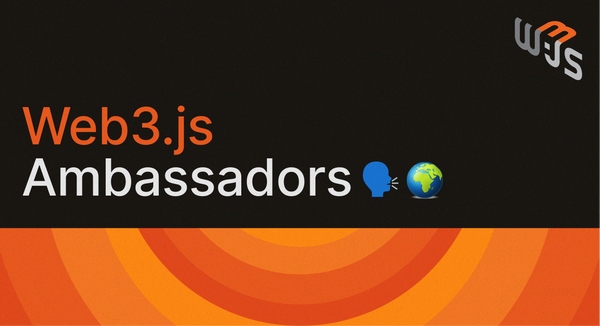Jammin’ With Web3.unity At BlockJam 2022

Authored by Timothy Hao Chi Ho
A recap ofChainSafe Gaming's involvement in the BlockJam2022 hackathon
Web3.unity is an open-source gaming SDK developed by ChainSafe that connects games built with Unity to the blockchain.
The library currently supports games built for web browsers (WebGL), iOS/Android mobile, and desktop. Web3.unity is compatible with most EVM-based chains such as Ethereum, Polygon, Moonbeam, Cronos, Nervos, and Binance Smart Chain, letting developers easily choose and switch between them to create the best in-game experience.
A successful BlockJam2022 for ChainSafe Gaming
On July 21st, Nervos Network's BlockJam2022 hackathon was officially completed. A final closing ceremony was hosted on Twitter Spaces, and if you missed it, you can listen to the whole recording here.
ChainSafe Gaming was honored to have been a part of the inaugural BlockJam. We were equally impressed with the caliber of talent on display at the hackathon.
Of note, our fully open-source gaming library, web3.unity, was featured as the marquee developer SDK. And with the hackathon receiving over 100 applicants, of which 12 final team submissions were made, we were impressed to learn that 9 out of 12 submissions used the web3.unity library - a strong signal that upstart web3 gaming devs see our library as critical gaming infrastructure.
Over 50% of games released on Steam today are developed in Unity, and with blockchain gaming on the rise, we couldn't be more excited to help lead the charge in gaming innovation.
You can check out the finalists and winners of the hackathon here.
web3 gaming: abountiful harvest
The competition ran for more than a month, and over $50k in bounties was available for hackers in the prize pool. Of this money, $1.5k came from ChainSafe's Gaming team under the ChainSafe SDK Bounty, where we incentivized hackers to use the newly released web3.unity minter prefab.
This module enables in-game minting of ERC-721 and ERC-1155 tokens, so we were excited to see developers make novel test cases for it! There was also a team that took a chance on the new minter features in web3.unity and won CAD 500 for their efforts.
⚠️ An aside for those keen-eyed Internet sleuths who LOVE our web3.unity SDK, you might have figured out that we will be releasing a MAJOR update (which includes the web3.unity minter prefab) to the library very soon. Stay tuned for more on this.
Some of our favorite blockchain game submissions
Harkening back to the breeding mechanics found in games like CryptoKitties, we absolutely loved the breedable Genetic Koonies. You can also buy and trade them and battle them in the arena with your friends in multiplayer.
Nervos.Land is a blockchain-based village simulator that allows for the minting of transferable characters as NFTs based on an in-game ERC-20 token ($NLT). You build settlements and mine resources, and characters within a settlement can battle.
Drawing Edge is the game that attempted to use our minter prefab and won the ChainSafe SDK Bounty. It is not exactly a full-fledged game, but it is novel for its showcase as a sculpting app. Players draw a 2D line, and the generator sculpts the shape into a blade. It can then be minted as an NFT.
Dongo is a third-person shooter where players can move their character around in-game to shoot and destroy an evil robot army. They must then find raw materials to produce an item that can be minted and awarded as an NFT.
ChainSafe appearances at BlockJam
ChainSafe Gaming also featured prominently throughout the event in talks and panels, including the closing ceremony where we judged and spoke on the web3.unity library. Ryan Noble, a software engineer on the Gaming team, made two appearances:
His first was a talk:
Ryan also appeared on a panel, "Game Devs vs. Blockchain - The Ultimate Showdown," where the moderator and the guests took turns speaking on their favorite video games growing up (2:57), why the gaming industry has shown so much resistance to blockchain (11:30), what are some practical ways blockchain can add value to game development (31:32), and advice for game developers who haven't used or worked with blockchain before (59:14).
ChainSafe Gaming's Alex Voto appeared as BlockJam's final judge and spoke at the closing ceremony. You can check out the recorded Twitter Space here. Alex begins speaking at 27:40.
We were also super excited to see our partners and hackers feature the web3.unity SDK in tutorials and how-tos. Here's an example: Eric VanderWal demonstrated how the web3.unity could be integrated with Playmaker in Unity to improve in-game user flows.
Taking web3 game development to the next level
Dive into the code via Github and the docs and download the latest web3.unity SDK release.
We LOVE seeing our talented gaming community's work. If you or your team have integrated some of the newest (or even older) features from the web3.unity suite, don't hesitate to share them on social media and tag us (@ChainSafeth on Twitter). Use the hashtag #ChainSafeGaming, and we will gladly reshare to show our support :)
If you have questions about the latest release, join the burgeoning gaming community in the #🕹 gaming-general channel in our Discord. And don't forget to check out our Gaming SDK YouTube tutorials!
About ChainSafe
ChainSafe is a leading blockchain research and development firm specializing in infrastructure solutions for web3. Alongside its contributions to major ecosystems such as Ethereum, Polkadot, Filecoin, Mina, and more, ChainSafe creates solutions for developers and teams across the web3 space utilizing our expertise in gaming, bridging, NFTs and decentralized storage.
As part of its mission to build innovative products for users and improved tooling for developers, ChainSafe embodies an open source and community-oriented ethos to advance the future of the internet. To learn more, click here.
Website |Twitter |Linkedin |GitHub |Discord |YouTube
Acknowledgments
Thanks to Alessandro Voto, Megan Doyle, and Phil Lucsok for contributing to this article.





